China, with its vast landscapes and diverse terrain, offers some of the most breathtaking hiking experiences in the world. From towering mountains to lush forests, ancient trails to modern pathways, there’s something for every type of hiker. Whether you’re an avid trekker seeking a challenge or a nature enthusiast craving serene landscapes, China has it all, so let’s embark on a journey through the top 10 hiking destinations in China.
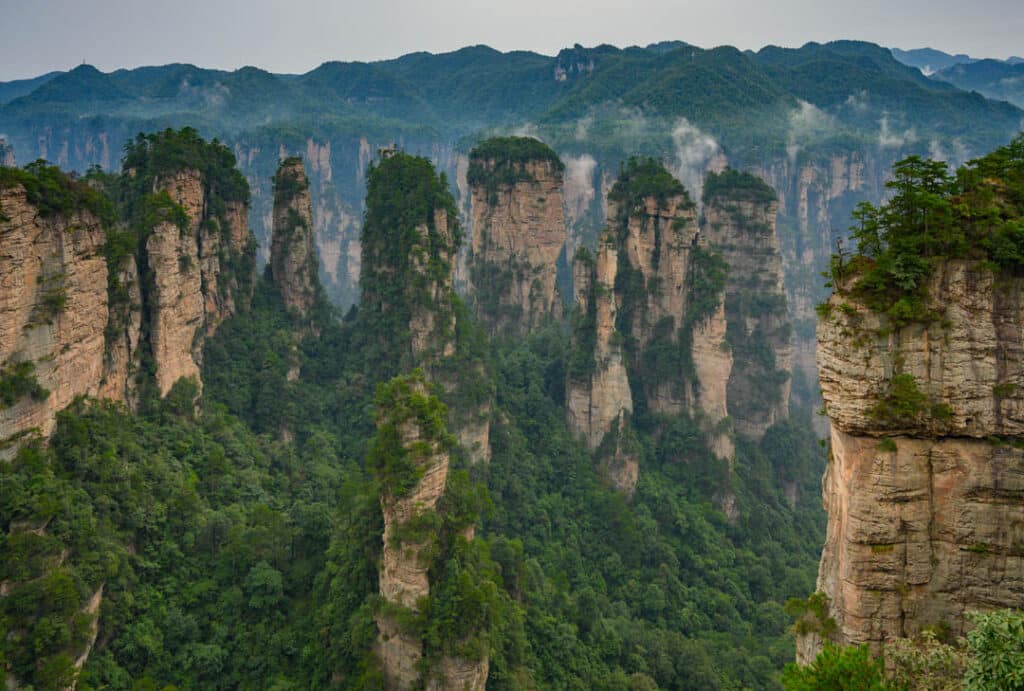
Hiking destinations in China -Zhangjiajie National Park. Wikimedia Creative Commons – By xiquinhosilva – 38021-Zhangjiajie, CC BY 2.0, https://commons.wikimedia.org/w/index.php?curid=138514079
Related: Hiking the Olmec Ruins, yes you Cantona
Exploring the Top 10 Hiking Destinations in China
1. Jiuzhaigou Valley
Nestled in the northern part of Sichuan Province, Jiuzhaigou Valley is a UNESCO World Heritage Site. It is renowned for its stunning natural scenery. Hiking trails wind through pristine forests, alongside crystal-clear lakes, and past cascading waterfalls. The diverse ecosystem here supports a variety of wildlife, including endangered species like the giant panda and the Sichuan takin. Don’t miss the opportunity to explore this fairyland on Earth.
2. Zhangjiajie National Forest Park
Made famous by the movie “Avatar.” Zhangjiajie National Forest Park in Hunan Province boasts surreal landscapes of towering sandstone pillars, lush vegetation, and mist-shrouded peaks. The park offers numerous hiking trails, including the thrilling Cliff-Hanging Walkway and the mesmerizing Golden Whip Stream trail. Prepare to be awe-inspired by the otherworldly beauty of this UNESCO-listed site.
3. Mount Huashan
For those seeking an adrenaline rush, Mount Huashan in Shaanxi Province provides a thrilling hiking experience. Known as one of China’s Five Great Mountains, Huashan is famous for its steep and perilous trails, breathtaking vistas, and ancient Taoist temples perched precariously on cliff edges. The plank walk along the mountain’s vertical face is not for the faint of heart but promises an unforgettable adventure.
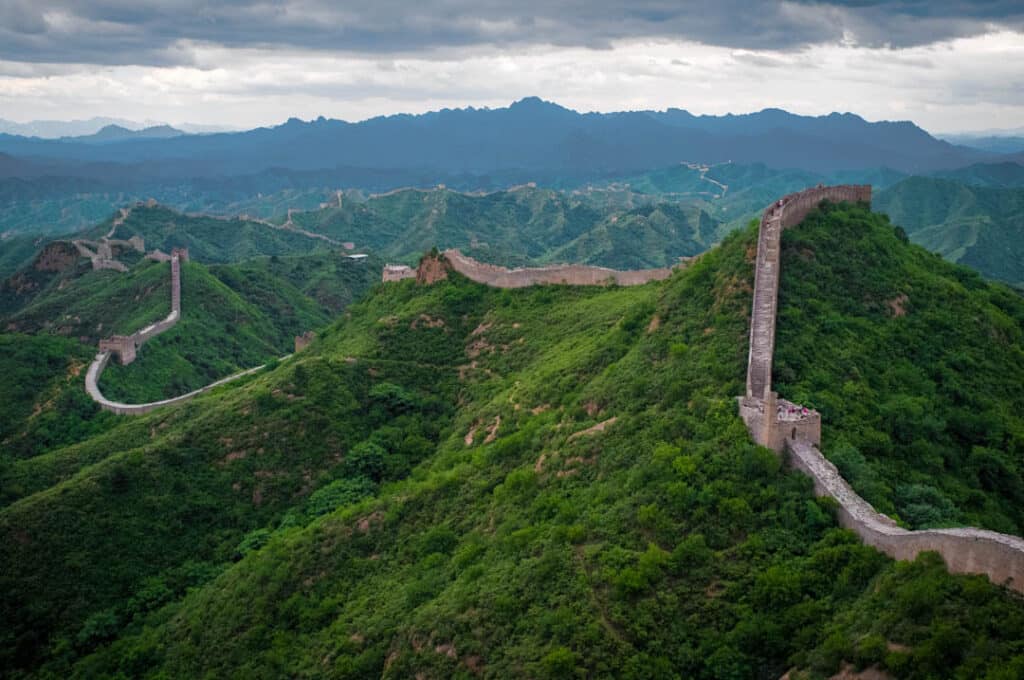
Hiking destinations in China – Great Wall – Wikimedia Creative Commons – By Severin.stalder, CC BY-SA 3.0, https://commons.wikimedia.org/w/index.php?curid=39661035
Related: Hiking the Corcovado Cauldron
4. The Great Wall of China (Jiankou Section)
While many sections of the Great Wall are popular tourist destinations, the Jiankou Section offers a more rugged and authentic hiking experience. Located in the mountains of Huairou District near Beijing, this unrestored portion of the wall offers spectacular views and a sense of adventure as you traverse its crumbling ramparts and steep inclines. Hiking here allows you to immerse yourself in history while enjoying breathtaking scenery.
5. Tiger Leaping Gorge
Carved by the roaring waters of the Jinsha River, Tiger Leaping Gorge in Yunnan Province is one of the deepest and most spectacular river canyons in the world. Hiking trails along the gorge’s edge offer dramatic views of towering cliffs and the rushing river below. The trek from Qiaotou to Walnut Grove is a popular route, providing opportunities to interact with local Naxi villagers and witness rural life amidst stunning natural beauty.
6. Mount HuaShan
Mount HuaShan, located near the city of Huayin in Shaanxi Province, is one of China’s Five Great Mountains and is known for its steep and narrow pathways, breathtaking views, and historic significance. Hiking trails lead to several peaks, each offering unique vistas and experiences. The famous Plank Walk in the Sky, suspended along a vertical cliff face, is not for the faint of heart but rewards courageous hikers with unparalleled views.
7. Jiuzhaigou National Park
Jiuzhaigou National Park, located in Sichuan Province, is renowned for its stunning natural beauty, including colorful lakes, waterfalls, and snow-capped peaks. Hiking trails wind through pristine forests and past scenic vistas, offering opportunities for wildlife viewing and photography. Don’t miss iconic attractions like Five Flower Lake, Nuorilang Waterfall, and the Primeval Forest as you explore this UNESCO World Heritage Site.
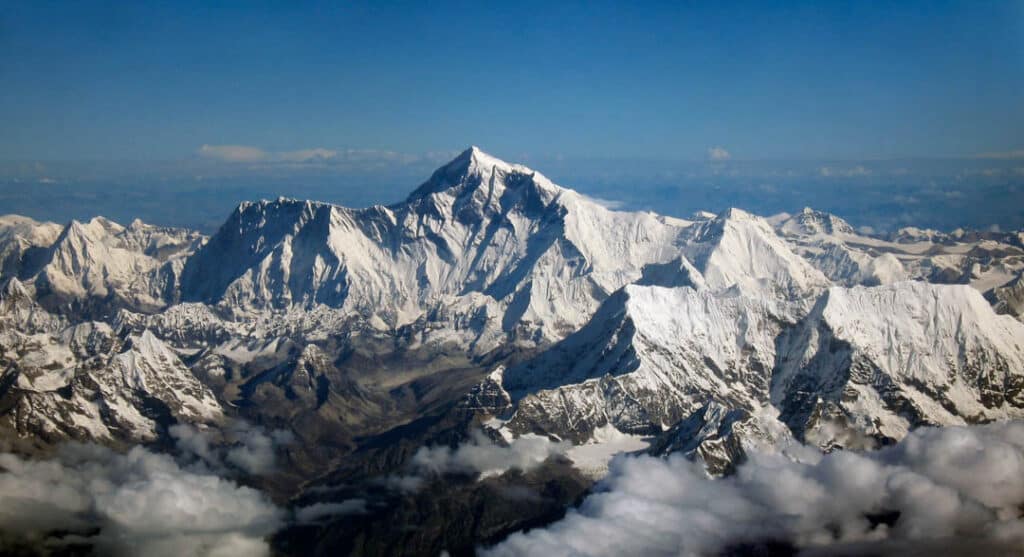
Mt. Everest is always an option on the Tibetan side for hiking destinations in China. Wikimedia Creative Commons – By Mount_Everest_as_seen_from_Drukair2.jpg: shrimpo1967derivative work: Papa Lima Whiskey 2 (talk) – This file was derived from: Mount Everest as seen from Drukair2.jpg:, CC BY-SA 2.0, https://commons.wikimedia.org/w/index.php?curid=18262217
8. Mount Everest Base Camp (Tibetan Side)
For experienced trekkers and adventurers, hiking to Mount Everest Base Camp on the Tibetan side is the ultimate challenge. Starting from the town of Tingri, the trail passes through rugged terrain, high mountain passes, and breathtaking valleys before reaching the base camp, where you’ll be rewarded with awe-inspiring views of the world’s highest peak. This epic journey is not for the faint of heart but promises an unforgettable adventure.
9. Mount Siguniang
Located in the Aba Tibetan and Qiang Autonomous Prefecture of Sichuan Province, Mount Siguniang, also known as Four Sisters Mountain, is a paradise for outdoor enthusiasts. The area offers a variety of hiking trails, ranging from leisurely walks to challenging ascents. As you explore the rugged landscapes. For example, you’ll encounter alpine meadows, pristine lakes, and panoramic vistas of snow-capped peaks, making it a haven for photographers and nature lovers alike.
10. Mount Wuyi
Nestled in Fujian Province, Mount Wuyi is a UNESCO World Heritage Site, and it is renowned for its breathtaking scenery, rich biodiversity, and cultural significance. Hiking trails wind through lush forests, past tea plantations, and along picturesque river valleys, offering glimpses of ancient temples, traditional villages, and stunning rock formations. Whether you’re a history buff, nature lover, or outdoor enthusiast, Mount Wuyi has something to offer everyone.
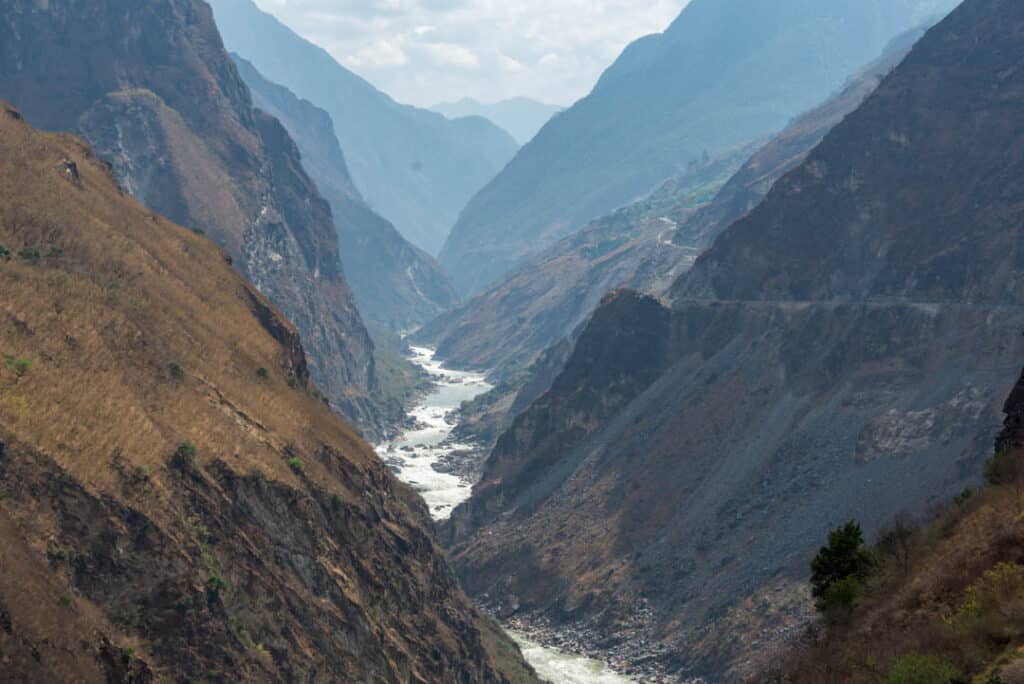
Hiking destinations in China -Tiger Leaping Gorge. Wikimedia Creative Commons – By xiquinhosilva – 56774-Tiger-Leaping-Gorge, CC BY 2.0, https://commons.wikimedia.org/w/index.php?curid=139294350
Travel visa to China
Most foreign nationals require a visa. The specific type of visa you’ll need depends on the purpose of your visit, such as tourism, business, work, study, or family reunion. Here’s a brief overview of the visa application process for tourists:
Tourist Visa (L Visa): If you’re visiting China for sightseeing, visiting family or friends, or other non-business activities, you’ll typically need an L Visa. To apply, you’ll need to submit a completed visa application form, a valid passport with at least six months’ validity, recent passport-sized photos, and proof of your travel itinerary (such as flight bookings and hotel reservations). You may also need to provide additional documents depending on your specific circumstances.
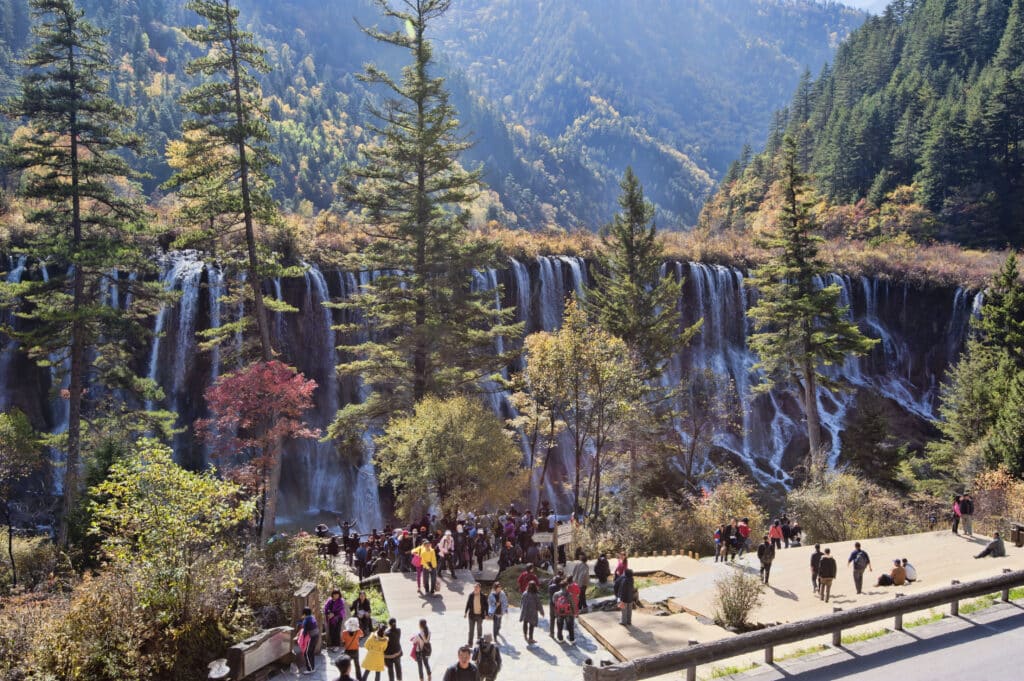
Wikimedia Creative Commons – By chensiyuan – chensiyuan, CC BY-SA 4.0, https://commons.wikimedia.org/w/index.php?curid=17201344
Application process and visa fees
Application Process: You can apply for a Chinese visa at the nearest Chinese embassy or consulate in your country. Some countries also have visa application centers where you can submit your documents. However, it’s advisable to check the specific requirements and procedures for your country of residence before applying.
Visa Fees and Processing Time: Visa fees and processing times vary depending on your nationality and the type of visa you’re applying for. Typically, you’ll need to pay a visa fee when submitting your application, and processing times can range from a few days to several weeks, so it’s essential to plan ahead.
Additional information
Additional Requirements: Depending on your nationality and travel history, you may be required to provide additional documents, such as a letter of invitation, proof of sufficient funds, or travel insurance. It’s essential to review the specific requirements for your visa application to ensure a smooth process.
Overall, obtaining a travel visa to China involves completing the necessary paperwork, providing supporting documents, paying the required fees, and adhering to the visa application guidelines outlined by the Chinese embassy or consulate in your area. It’s advisable to start the visa application process well in advance of your planned travel dates to allow for any potential delays.
Adventure on!








